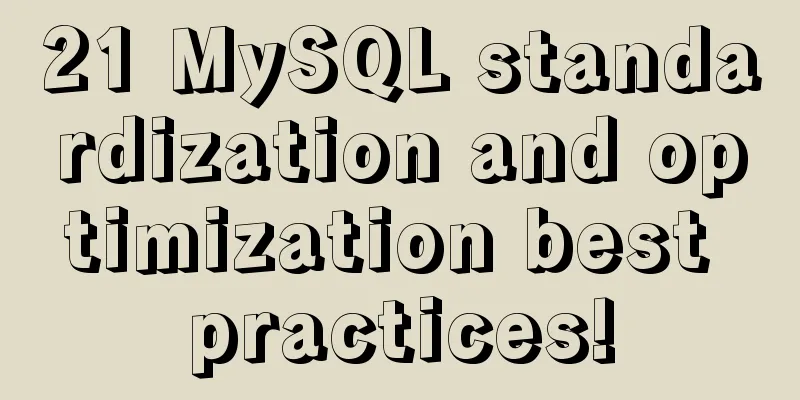How to run Spring Boot application in Docker

|
In the past few days, I have studied how to run spring boot applications in docker. Previously, there was a maven plug-in that could directly create a docker folder in src/main and a new Dockerfile file. After compiling and packaging, you can directly run the docker plug-in, which is equivalent to executing Therefore, when I later built the spring boot application into a mirror, I no longer used the provided docker maven plug-in, but created a new Dockerfile file in the root directory of the current project. After the application was written, I manually executed the command to build the application into a mirror, as follows. Springboot application pom.xml In the pom.xml here, you need to specify several repositories and provide several plug-ins, as follows:
<project xmlns="http://maven.apache.org/POM/4.0.0" xmlns:xsi="http://www.w3.org/2001/XMLSchema-instance"
xsi:schemaLocation="http://maven.apache.org/POM/4.0.0 http://maven.apache.org/xsd/maven-4.0.0.xsd">
<modelVersion>4.0.0</modelVersion>
<groupId>cn.com</groupId>
<artifactId>springbootweb</artifactId>
<version>1.0-SNAPSHOT</version>
<packaging>jar</packaging>
<name>spring :: boot :: web</name>
<parent>
<groupId>org.springframework.boot</groupId>
<artifactId>spring-boot-starter-parent</artifactId>
<version>1.4.1.RELEASE</version>
<relativePath/>
</parent>
<properties>
<project.build.sourceEncoding>UTF-8</project.build.sourceEncoding>
<docker.image.prefix>springio</docker.image.prefix>
<docker.version>0.3.8</docker.version>
<java.version>1.8</java.version>
</properties>
<dependencies>
<dependency>
<groupId>org.springframework.boot</groupId>
<artifactId>spring-boot-starter-web</artifactId>
</dependency>
</dependencies>
<repositories>
<repository>
<id>spring-snapshots</id>
<url>http://repo.spring.io/snapshot</url>
<snapshots>
<enabled>true</enabled>
</snapshots>
</repository>
<repository>
<id>spring-milestones</id>
<url>http://repo.spring.io/milestone</url>
<snapshots>
<enabled>true</enabled>
</snapshots>
</repository>
</repositories>
<pluginRepositories>
<pluginRepository>
<id>spring-snapshots</id>
<url>http://repo.spring.io/snapshot</url>
</pluginRepository>
<pluginRepository>
<id>spring-milestones</id>
<url>http://repo.spring.io/milestone</url>
</pluginRepository>
</pluginRepositories>
<build>
<plugins>
<plugin>
<groupId>org.apache.maven.plugins</groupId>
<artifactId>maven-compiler-plugin</artifactId>
<version>3.2</version>
<configuration>
<compilerArgument>-parameters</compilerArgument>
<source>1.8</source>
<target>1.8</target>
<encoding>UTF-8</encoding>
</configuration>
</plugin>
<plugin>
<groupId>org.apache.maven.plugins</groupId>
<artifactId>maven-surefire-plugin</artifactId>
<version>2.18.1</version>
<configuration>
<skipTests>true</skipTests>
</configuration>
</plugin>
<plugin>
<groupId>org.apache.maven.plugins</groupId>
<artifactId>maven-resources-plugin</artifactId>
<version>2.6</version>
<configuration>
<encoding>UTF-8</encoding>
</configuration>
</plugin>
<plugin>
<groupId>org.springframework.boot</groupId>
<artifactId>spring-boot-maven-plugin</artifactId>
<!--<version>${spring.boot.version}</version>-->
<configuration>
<mainClass>cn.com.SpringBootWebApplication</mainClass>
<layout>ZIP</layout>
</configuration>
<executions>
<execution>
<goals>
<goal>
repackage
</goal>
</goals>
</execution>
</executions>
</plugin>
</plugins>
</build>
<profiles>
<profile>
<id>JDK1.8</id>
<activation>
<activeByDefault>true</activeByDefault>
</activation>
<properties>
<maven.compiler.source>1.8</maven.compiler.source>
<maven.compiler.target>1.8</maven.compiler.target>
<encoding>UTF-8</encoding>
</properties>
</profile>
</profiles>
</project>Several warehouse addresses are provided here. The reason is that when the springboot application is put into docker in this article, the source code is directly put in, and then compiled and packaged in it for running. If the warehouse address is not provided to download the jar package, the dependencies will be pulled from the central warehouse, which will be very slow and the pull timeout will occur, resulting in the application being unusable. Therefore, several other warehouse addresses are provided to download dependencies. In addition, there is a plug-in here. After using this plug-in, you can run the application directly in the form of mvn spring-boot:run, so I did not decide to use java -jar xxx.jar to run the application. Application and controller This SpringBoot application is quite simple and provides a simple controller with an interface similar to Hello World, as follows:
package cn.com.controllers;
import org.springframework.web.bind.annotation.RequestMapping;
import org.springframework.web.bind.annotation.RestController;
import java.util.HashMap;
import java.util.Map;
/**
* Created by xiaxuan on 16/11/27.
*/
@RestController
public class IndexController {
@RequestMapping(value = "/index", produces = "application/json;charset=utf-8")
public Object index() {
Map<String, Object> result = new HashMap<String, Object>();
result.put("msg", "hello world");
return result;
}
}Provide a simple helloworl method. The following is the Application startup class:
packagecn.com;
import org.springframework.boot.SpringApplication;
import org.springframework.boot.autoconfigure.SpringBootApplication;
/**
* Created by xiaxuan on 16/11/27.
*/
@SpringBootApplication
public class SpringBootWebApplication {
public static void main(String[] args) {
SpringApplication.run(SpringBootWebApplication.class, args);
}
}In a normal spring boot startup, it is quite simple. Just start the SpringBootWebApplication startup class. However, if you run it in a docker container, it is not that simple. Take a look at the Dockerfile file below. Dockerfile The Dockerfile file is also relatively simple, as follows: # base image FROM java:8 # maintainer MAINTAINER bingwenwuhen [email protected] # update packages and install maven RUN \ export DEBIAN_FRONTEND=noninteractive && \ sed -i 's/# \(.*multiverse$\)/\1/g' /etc/apt/sources.list && \ apt-get update && \ apt-get -y upgrade && \ apt-get install -y vim wget curl maven # attach volumes VOLUME /vol/development # create working directory RUN mkdir -p /vol/development RUN mkdir -p /vol/development/src WORKDIR /vol/development COPY ./src /vol/development/src/ COPY ./pom.xml /vol/development/ # maven exec CMD ["mvn", "clean", "install", "spring-boot:run"] The dockerfile uses java8 as the base image, and maven needs to be installed separately in the base image. Because in our dockerfile file, the entire source code is typed into the image, and here only the generated jar is not typed into the image. So this is what I said before that the warehouse needs to be specified in pom.xml. If the warehouse is not specified, when pulling dependencies in the image, dependencies will be pulled from the central warehouse, which will be very slow. I have tried it several times before, and the basic pulling process has timed out and failed, so specify the warehouse here to pull dependencies. Build the image Now execute the command in the directory,
After mirroring, run Now
Now the container is running. Request interface Before requesting the interface, you need to check the IP address of the Docker virtual machine. The IP address of this machine is 192.168.99.100. The command to request the interface is: curl http://192.168.99.100:8080/index The response is:
{
"msg":"hello world"
}The request is successful. The springboot application is successfully run in docker. question
Source code I uploaded the source code to github, you can download it if you need it. Source code download The above is the full content of this article. I hope it will be helpful for everyone’s study. I also hope that everyone will support 123WORDPRESS.COM. You may also be interested in:
|
<<: Sample code for implementing history in vuex
>>: Example of converting spark rdd to dataframe and writing it into mysql
Recommend
JavaScript flow control (branching)
Table of contents 1. Process Control 2. Sequentia...
MySQL 8.0.18 Installation Configuration Optimization Tutorial
Mysql installation, configuration, and optimizati...
MySQL database JDBC programming (Java connects to MySQL)
Table of contents 1. Basic conditions for databas...
mysql5.6.zip format compressed version installation graphic tutorial
Preface: MySQL is a relational database managemen...
How to redirect URL using nginx rewrite
I often need to change nginx configuration at wor...
Use dockercompose to build springboot-mysql-nginx application
In the previous article, we used Docker to build ...
Implementing a simple timer in JavaScript
This article example shares the specific code of ...
Using js to achieve the effect of carousel
Today, let's talk about how to use js to achi...
Defining the minimum height of the inline element span
The span tag is often used when making HTML web p...
React Synthetic Events Explained
Table of contents Start by clicking the input box...
Problems and solutions for MYSQL5.7.17 connection failure under MAC
The problem that MYSQL5.7.17 cannot connect under...
Solution to the problem that the Vue page image does not display
When making a new version of the configuration in...
Example operation MySQL short link
How to set up a MySQL short link 1. Check the mys...
Deepin20.1 system installs MySQL8.0.23 (super detailed MySQL8 installation tutorial)
Download MySQL-8.0.23 Click to download: mysql-8....
Teach you how to insert 1 million records into MySQL in 6 seconds
1. Idea It only took 6 seconds to insert 1,000,00...











